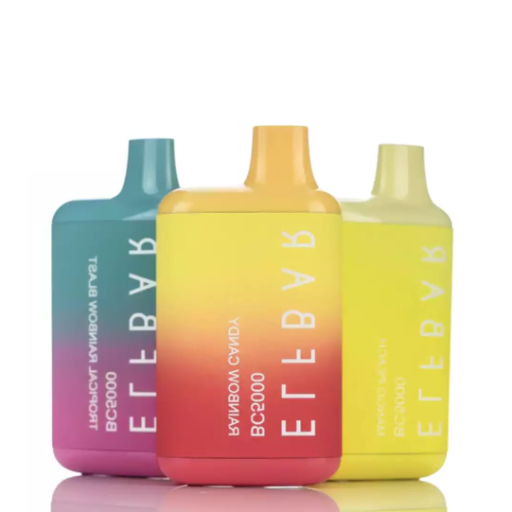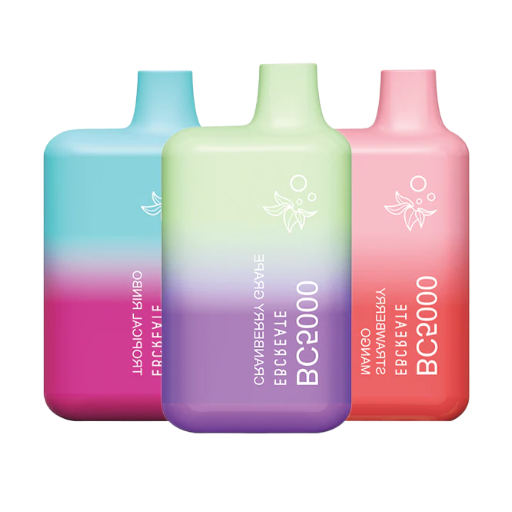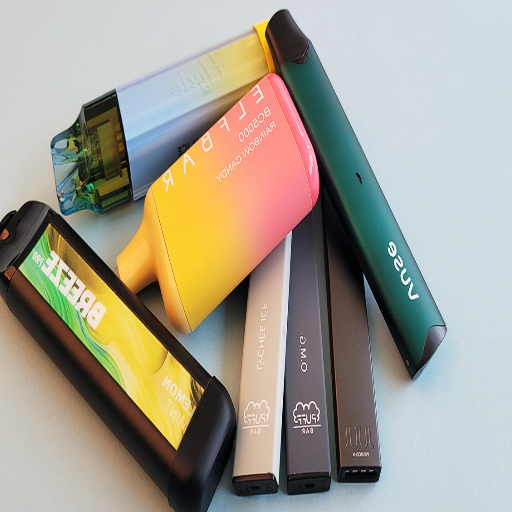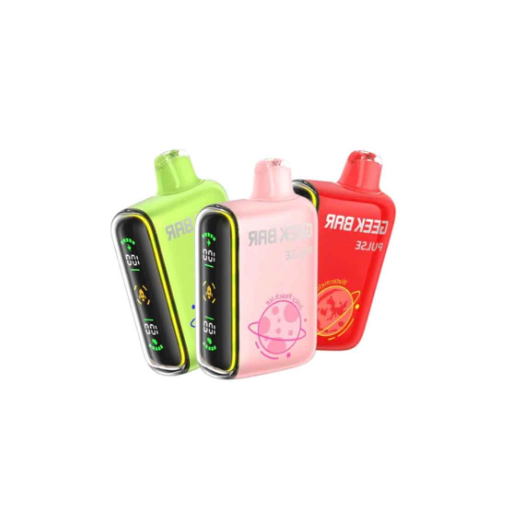With the rapid rise in vaping’s popularity, understanding the composition and nicotine content of various devices has become crucial for consumers. Different vapes cater to a wide spectrum of preferences, from low-nicotine options for casual users to high-nicotine devices designed to replicate the intensity of traditional cigarettes. This guide will break down the key factors influencing nicotine levels in vapes, including device types, e-liquid formulations, and nicotine delivery systems. Whether you’re a seasoned vaper or new to the scene, this article provides a detailed analysis to help you make informed choices based on your individual needs and preferences.
What is the Nicotine Content in Different Vapes?

Understanding Nicotine Level in Vapes
Nicotine strength in vapes depends on a few important aspects such as device type, formulation of e-liquid, and the method through which nicotine is delivered. From my side, I value these metrics a lot since they shape the experience of the consumer and the user.
- Device Type: These types of devices include closed systems, such as pod systems that use pre-filled cartridges. They are usually set to a specific freebase concentration. Open-system vapes that enable users to manually refill e-liquids, however, tend to be more flexible concerning nicotine amount and wattage settings.
- E-Liquid Formulations: E-liquids can use freebase nicotine or nicotine salts. Freebase nicotine delivers a harsher throat hit, which is best for lower concentrations of 3-18 mg/mL. On the other hand, Nicotine salts are smoother at higher concentrations of 20-50 mg/mL, which is often preferred by people making the switch from traditional smoking.
- Efficiency of Nicotine Delivery: Other aspects such as coil resistance and wattage affect the efficiency of nicotine delivery.
I analyze these metrics so I can ensure that the amount of nicotine taken is by my personal preference, whether I want to reduce the amount of nicotine consumed or if I want to enjoy vaping.
Comparing Nicotine Content in Disposable Vapes and E-cigarettes
In comparing the nicotine levels between disposable vapes and e-cigarettes, the topics expand into the design and purpose of the device used. Disposable vapes, usually have higher nicotine levels in the device due to the pre-filled liquid, which contains nicotine in the form of nicotine salts, usually ranges from 20-60 mg/mL. This approach makes it easier for the users to make use. For e-cigarettes, the tanks or pods utilized are refillable, which provides the user with more choices along with freebase nicotine or nicotine salts in the strength of 0-50 mg/mL.
- Nicotine Concentration: Disposable vapes have pre-done doses of e-liquids, hence vapes are more commonly used, whereas e-cigarettes provide more options to control the strength.
- Coil Resistance: sub-ohm coils (lower resistance) are more commonly used in e-cigarettes to directly inhale vape smoke stronger and low nicotine liquids (3-6 mg/mL). Boosted coil resistance of disposable vapes is intended for mouth-to-lung vaping that usually comes with high levels of nicotine.
- Power Output (Wattage): e-cigarettes, having adjustable wattage, can change the power level for the vaping experience, unlike disposable vapes which have fixed, optimized wattage.
After looking into them and considering my needs, I realize that I can select a device that either increases the rate of nicotine delivery or aids in tapering off over time. It is this technical detail that highlights how particular applications meet specific requirements.
How Does Nicotine Poisoning Occur with High-Nicotine Vapes?

Signs and Symptoms of Nicotine Poisoning
Nicotine poisoning takes place when there is an abundance of nicotine excessively put into the body, which stuns the nervous and cardiovascular systems. Symptoms usually appear in a mixture of two phases. The primary symptoms can be added discomfort, sickness, vomiting, salivating, abdominal cramping, and sweating because of the initial stimulation of the phase system’s nervous system. After this, one can experience dizziness, bewilderment, tremors, experiencing seizures, or even having difficulty breathing as the dosage escalates.
- Nicotine Concentration (mg/mL): Unlike normal vapes, high-nicotine vapes have concentrations that are known to go past 50 mg/mL. Other examples include those found in salts-based e-liquids which undergo a sharp danger exposure when used constantly.
- Absorption Rate: Mucous membranes are designed for rapid absorption, which greatly accentuates the rate of systemic impact much more compared to freebase nicotine.
- Exposure Volume: The act of inhaling or unexpected consumption of e-liquid is very dangerous. Even 10-30 mg of nicotine can have negative results depending on the body weight of the individual. This toxic limit is comparatively lower for kids, making it even more important to magnify the focus on exposure.
- Tolerance Levels: A user’s history of nicotine consumption highly affects the toxicity threshold level. Those who do not smoke or have much experience using BBQ cigarettes can pin, a lot more symptoms than there are dosages.
Trying to squash and get rid of signs of nicotine poisoning, such as mild seizures and having trouble breathing, by yourself can be disastrous. The symptoms need immediate medical attention to avoid outcomes that are beyond disastrous.
Preventing Nicotine Overdose While Vaping
To avoid vaping nicotine overdose, I would follow the guidelines and strategies mentioned below:
- Understand Nicotine Concentration Levels: When choosing e-liquids, I would select one that matched my tolerance level and personal history of nicotine usage. While new users often start with a 3–6 mg/mL concentration, more seasoned smokers have higher limits going up to 12–18 mg/mL. Anything above these levels, especially for novice users, carries the potential risk of exaggerating toxicity.
- Control frequency and duration of usage: I would take special care to monitor the time frame or interval between bouts of use, in addition to noting how long I spend vaping. Short but frequent bouts of vaping are contraindicated as they can lead to the accumulation of nicotine in the bloodstream above safe levels.
- Choose devices with enhanced features: I would prioritize devices that allow adjustment of wattage and temperature, to help control the amount of vapor and nicotine consumed. These features will not only help in controlling overdose but will also mitigate the chance of vapor production over the set thresholds.
- Acknowledge the first signs of vaping overdose: Some common signs of nicotine poisoning include increased heart rate, nausea, headaches, and dizziness. Being aware of these signs will allow me to control further exposure efficiently.
- Storage and Handling of E-Liquids: The aforementioned practices combined with storing the e-liquid in a cool dark place is conducive to preventing skin absorption or accidental ingestion. Dosage measuring syringes, as well as other tools, should also be stored properly.
These measures will make certain the use of e-liquid is done safely.
Which Disposable Vapes Have the Highest Nicotine Content?

Popular Disposable Vape Brands with High Nicotine Levels
From my research and use of available data, some popular disposable vape brands with high nicotine levels. These brands often utilize nicotine salts, which allow for a smoother inhalation even at high concentrations. For example, many of these disposable vapes deliver nicotine concentrations of 5% by volume (50mg/mL), a figure that aligns with the maximum allowable limit in several regulatory regions.
- E-liquid Capacity: The electronic liquid volume for most brands is between 1.3mL to 2mL, which allows for durable dosages of nicotine throughout the entire product duration.
- Puff Count: Puff counts on these devices generally range from 300 to 600 puffs. These numbers tend to be higher with devices containing more nicotine, which varies depending on brand and model and is directly related to the users’ e-liquid consumption.
- Nicotine Formulation: These devices utilize nicotine salts instead of freebase nicotine because it has a higher absorption rate into the bloodstream, which makes it efficient for users who want a higher dose of nicotine.
By focusing on these factors, I can objectively determine which disposable vape brands meet the criteria for high nicotine content.
Understanding Nicotine Per Puff in Disposable Vapes
- E-Liquid Concentration: The strength of the nicotine is calculated in milligrams per milliliter (mg/mL) or as a percentage (%). A salt formulation of nicotine of 50mg/mL contains 5% nicotine by volume which is much stronger than freebase nicotine.
- Puff Volume: The amount of nicotine received in a puff is dependent on the puff volume which is sometimes expressed in milliliters or cubic centimeters. A general puff20 is frequently estimated at 35mL, although actual values may differ concerning user behavior and device capabilities.
- Device Efficiency: The efficiency of the heating coil and the design of the airflow system directly affect vapor production. More efficient devices also tend to produce more consistent vapor resulting in a reliable nicotine dose in every puff.
- E-Liquid Consumption Rate: The rate at which e-liquid is consumed by vaping devices determines the level of nicotine delivered. E-liquid can be depleted faster by a more powerful device measured in watts which results in higher nicotine intake in each puff.
Considering these factors, we can estimate the amount of nicotine consumed per puff. For example, if the nicotine concentration is set at 50mg/mL then a single puff that requires around 0.033mL of vapor (according to average consumption rates) will obtain nearly 1.65mg of nicotine (50mg/mL x 0.033mL). This value will vary based on individual factors like the strength of inhalation and the number of inhalations per unit time.
How Does Nicotine Strength in E-cigarettes Compare to Smoking Cigarettes?

Comparing Nicotine in E-cigarettes and Traditional Cigarettes
An average cigarette, depending on the smoker’s frequency of puffing, duration, and inhalation, will range between 1.1 and 1.8 milligrams of nicotine per cigarette. The modern e-cigarette, on the other hand, has features that allow for adjustable levels of nicotine delivery such as device settings and e-liquid concentration. For instance, while using an e-liquid that contains 50mg of nicotine, one can approximate 0.033mm /puff during consumption. This results in about 1.65mg of ingested nicotine per puff.
- Nicotine Concentration: This is the most basic consideration in setting nicotine levels. Concentration is expressed as mg/mL for e-liquids against the basic cigarette nicotine content (approx. 10-12mg per cigarette is utilized although not fully).
- The volume of Vapor: Considering an intermediate e-cigarette user and a good quality device, one puff translates into roughly 0.033mL of liquid vapor which is usually consumed.
- Delivery Efficiency: Ails and combustible cigarettes vary in delivery efficiency from 10-30%. E-cigarettes vary with the style of inhalation and power of the device, this makes delivery efficiency of nicotine less to certain users and more for others.
- Number of Puffs: Traditional combust bong with a switch vaporizer offers an average of 300 puffs per use while cigarette users usually take 8 to 12 puffs per cigarette.
Considering these factors, nicotine in e-cigarettes can be at par with or higher than traditional cigarettes, depending on its use.
The Impact of Nicotine Concentration on Throat Hit
The concentration of nicotine is a primary element that dictates the level of “throat hit” experienced by e-cig users. The throat thit is experienced even at the commencement and each subsequent drag becomes increasingly anguishing. Users who used to smoke traditional cigarettes find this pleasurable. It is so enjoyed because nicotine is a stimulant and belongs to the throat’s nerve ending, so the person experiences the sensations.
- Low Concentration (3-6 mg/mL): Gives light smokers or occasional vapers a more preferred throat hit that is much smoother and enjoyable for them.
- Medium Concentration (12-18 mg/mL): Works for moderately experienced smokers with an average consumption rate.
- High Concentration (20+ mg/mL, often in nicotine salts): A very strong throat hit is provided which is quite similar to what people get from combustible cigarettes.
The type of nicotine also matters. Freebase nicotine, for example, is proven to have a harsher throat hit in high concentrations. However, with the right chemical composition of nicotine salts, it provides a smoother throat hit even at high doses. This makes them perfect for closed pod systems. Consequently, when customizing a vape device, both the nicotine strength and the device or e-liquid need to be taken into consideration.
What are the Tobacco Industry Regulations on Nicotine Levels in Vaping Products?

Current Nicotine Regulations for Vaping
At present, the regulation of nicotine in vaping products differs from region to region, to protect consumers from undue exposure. Limiting the maximum nicotine concentration in e-liquids to 20 mg/mL serves to reduce the chances of becoming addicted to nicotine and yet offers adequate satisfaction to smokers who switch to vaping.
The production and sale of vape products are subject to regulation by the Food and Drug Administration (FDA). While there are currently no specific federal regulations regarding nicotine concentration, manufacturers are required to apply for premarket authorization and include information about the product’s constituent, including nicotine levels.=
Nicotine levels have a direct influence on the delivery, and the potency of the ‘throat hit’. High-powered devices coupled with concentrations of freebase nicotine over 20 mg/mL can be harsh to the throat, and in some cases exceed safe limits. High concentrations of nicotine are also associated with increased addiction potential which is particularly problematic for naïve users. Therefore, explaining these limits is important because there is a direct relationship between increasing target concentration and increased risk of addiction.
Using an e-cig and e-liquids applies a degree of skill as failure to comply with some of the guidelines may lead to serious injuries and health-related problems.
The Future of Tobacco Products about Nicotine Control
The next generation of tobacco products will likely be guided by harsher measures for controlling nicotine in a way that reduces addiction risks while promoting the well-being of the public. Laws will likely be passed that ban the use of certain levels of nicotine in e-liquids and establish conditions for product safety and design.
- Limits on Concentration of Nicotine: Some existing legislation provisions on the product guarantee against high harshness and addictiveness for beginner users achieve that by capping doses at 20mg/mL.
- Puch Power Device: Capping power outputs in high-powered devices to avoid over-delivery of nicotine and acute toxic plus addicting meager stimulative effects.
- Child Proofing: Strict standards on packaging to avert instances of children ingesting the products unintentionally which is still a major safety issue.
- Ingredient Black Box: Users and regulatory agencies assessing the product should have the right to know every component deemed safe or unsafe in the product.
- Protocol Product Testing: Devices for the testing of vapor constituents emissions pulses must be adopted to ensure compliance of the emitted vapor with established safety levels.
When the industry tackles these safety and technical issues, they can meet public health objectives, mitigate risks of misuse, and step towards products that pose controlled harm. In my opinion, this balance can only be achieved with a collaborative effort of regulators, manufacturers, and public health professionals.
Reference sources
Frequently Asked Questions (FAQs)
Q: How much nicotine does a typical vape pen contain?
A: The amount of nicotine in a vape pen can vary widely, with some containing as much as 50 mg of nicotine per milliliter. This is equivalent to a pack of cigarettes. However, there are also options with lower nicotine levels, such as those containing 3mg of nicotine or even nicotine-free varieties.
Q: How does the nicotine content in electronic cigarettes compare to traditional cigarettes?
A: The nicotine content in electronic cigarettes can be similar to or even higher than traditional cigarettes. While a typical cigarette contains about 10 to 12 mg of nicotine, vape juices can contain up to 60 milligrams of nicotine per milliliter, providing a much stronger dose for users.
Q: Are there electronic cigarettes with higher nicotine concentrations than regular cigarettes?
A: Yes, some electronic cigarettes, like certain JUUL pods, offer higher nicotine concentrations than regular cigarettes. These products can have up to 5% nicotine by weight, which is roughly equivalent to 20 cigarettes or a full pack.
Q: Can using vape pens help quit smoking?
A: Many people use vape pens as a tool to quit smoking, as they can gradually reduce their nicotine intake. However, the effectiveness can vary, and for some, nicotine addiction persists due to the concentrated nicotine in some vape products.
Q: What are the risks of using high-nicotine vape products?
A: High-nicotine vape products can lead to nicotine addiction and other health issues. In extreme cases, consuming too much nicotine can be fatal, as 60 milligrams of nicotine is considered a lethal dose for adults.
Q: Are there any regulations on the amount of nicotine allowed in e-cigarettes?
A: Yes, there is a limit on nicotine concentrations in some regions. For example, the European Union limits e-liquids to a maximum of 20 mg/ml of nicotine. However, regulations can vary by country and region.
Q: How do I know if a vape is way too strong for me?
A: If you experience symptoms like dizziness, nausea, or a rapid heartbeat, the nicotine content may be way too strong for you. It’s as simple as trying a lower-nicotine product or consulting with a healthcare professional for advice.
Q: What should I consider when choosing a vape with much nicotine?
A: Consider your current nicotine habits, like how many cigarettes you smoke daily. Also, take into account the variety of flavors available, as well as the nicotine strength, to find a balance that helps you manage your intake effectively.
Q: Are there any nicotine-free options available for vapes?
A: Yes, many brands offer nicotine-free vape juices. These are ideal for those who want to enjoy vaping without the effects of nicotine or for individuals looking to gradually reduce their nicotine consumption.
Q: What is the role of the CDC in regulating vape products?
A: The CDC provides guidance and research on the health impacts of vaping and nicotine products. However, regulatory authority typically lies with agencies like the FDA. The CDC’s insights help shape public health recommendations and awareness campaigns.







